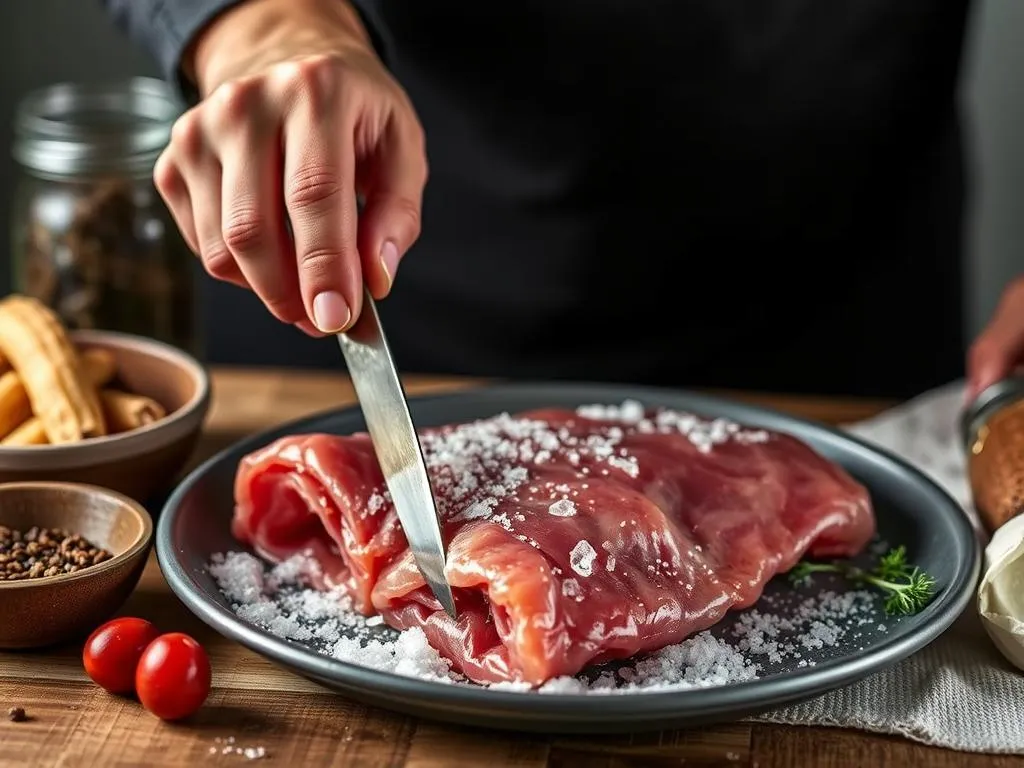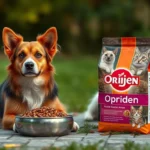
Introduction
Definition of Raw Dog Food
Raw dog food refers to a diet comprising uncooked ingredients, including raw meats, bones, fruits, and vegetables. Advocates of this feeding method believe that it mimics the natural diet of dogs, promoting optimal health and well-being.
Benefits of Raw Dog Food
The transition to a raw diet can bring a plethora of benefits for your canine companion, including:
- Improved digestion: Many dog owners report that their pets experience fewer gastrointestinal issues, resulting in healthier and firmer stools.
- Healthier coat and skin: A raw diet rich in omega fatty acids can lead to a shinier coat and reduced skin irritations.
- Increased energy levels: Dogs on a raw diet often exhibit higher energy levels, due to better nutrient absorption and a more balanced diet.
Purpose of the Article
This article aims to guide you on how to prepare frozen raw dog food safely and effectively, ensuring your pet receives all the nutritional benefits associated with a raw diet.
Understanding Dog Nutrition
Essential Nutrients for Dogs
A balanced dog diet contains various essential nutrients, including:
- Proteins: Vital for growth, repair, and maintenance of body tissues.
- Carbohydrates: Provide energy sources and aid in digestion.
- Fats: Essential for energy and absorption of fat-soluble vitamins.
- Vitamins and Minerals: Crucial for metabolic functions and overall health.
Role of Raw Diets in Dog Nutrition
Raw diets can provide a more natural alternative to commercial dog foods, which often contain fillers and preservatives. This diet emphasizes whole foods, allowing for better nutrient availability and absorption.
Common Myths about Raw Dog Food
Several misconceptions exist about raw diets, such as:
- Raw food is dangerous: While there are risks associated with improper handling, a well-prepared raw diet can be safe and nutritious.
- All dogs can thrive on raw food: While many dogs do well on raw diets, individual health needs must be considered.
Types of Raw Dog Food
Whole Prey Model
The whole prey model mimics the natural diet of wild canines, including the entire animal—from bones to organs.
- Pros: Provides balanced nutrition and promotes natural chewing behavior.
- Cons: Can be expensive and challenging to source.
Barf Diet (Biologically Appropriate Raw Food)
The BARF diet focuses on a combination of raw meat, bones, fruits, and vegetables to create a balanced meal.
- Overview: This approach emphasizes that dogs thrive on a diet similar to their ancestors.
- Advantages: Allows for flexibility in ingredients and can be tailored to individual dog needs.
Commercial Frozen Raw Dog Food
When opting for commercial frozen raw dog food, it’s essential to choose high-quality brands that meet specific nutritional standards. Look for:
- Clearly labeled ingredients.
- A balance of meats, organ meats, and vegetables.
- Absence of fillers or artificial preservatives.
Preparing Frozen Raw Dog Food
Choosing the Right Ingredients
Selecting the right ingredients is crucial for a balanced raw diet. Consider:
- High-quality meats: Look for fresh, organic, or grass-fed options whenever possible.
- Organ meats: These are nutrient-dense and should comprise about 10-15% of the diet.
- Vegetables and supplements: Incorporate dog-safe vegetables and consider supplements like fish oil or probiotics for added benefits.
Safety Precautions
When preparing raw dog food, safety is paramount. Here are some essential precautions:
- Keep a clean workspace: Sanitize surfaces and utensils before and after preparation.
- Use gloves: Prevent cross-contamination and maintain hygiene.
- Understand cross-contamination: Store raw ingredients separately from cooked foods and use designated utensils for raw preparation.
Step-by-Step Preparation Process
Step 1: Thawing the Meat
Best practices for safely thawing include:
- Thaw meat in the refrigerator for 24 hours.
- Avoid thawing at room temperature to minimize bacterial growth.
Step 2: Measuring Ingredients
How to calculate portion sizes based on dog weight:
- For adult dogs, a general guideline is 2-3% of their body weight.
- For puppies, the amount may increase to 5-6%, depending on growth needs.
Step 3: Mixing Ingredients
Techniques for ensuring a balanced mix:
- Use a large bowl or food processor to combine all ingredients thoroughly.
- Aim for a ratio of approximately 70% meat, 20% vegetables, and 10% organ meats for balance.
Step 4: Packaging for Freezing
Options for storage containers and labeling:
- Use airtight containers or freezer bags to prevent freezer burn.
- Label containers with the date and contents for easy identification.
Step 5: Freezing and Storing
Best freezing methods to maintain freshness:
- Freeze in small portions for easy thawing.
- Store raw dog food at 0°F (-18°C) or lower to maintain quality.
Serving Frozen Raw Dog Food
Thawing Before Serving
Recommended methods for thawing:
- Thaw in the refrigerator overnight before serving.
- If short on time, submerge sealed bags in cold water for quicker thawing.
Feeding Guidelines
How often and how much to feed:
- Adult dogs typically require 1-2 meals per day.
- Monitor your dog’s weight and adjust portions as needed.
Monitoring Your Dog’s Health
Watch for signs of allergies or intolerances, such as:
- Digestive upset (vomiting or diarrhea).
- Skin irritations or excessive itching.
- Changes in behavior or energy levels.
Frequently Asked Questions (FAQs)
Is raw dog food safe for all dogs?
While many dogs can thrive on raw diets, specific health conditions may necessitate caution. Always consult with your veterinarian before making dietary changes.
How do I transition my dog to a raw diet?
Start by gradually introducing raw food alongside their current food over several days or weeks, slowly increasing the raw portion while decreasing the kibble.
What to do if my dog refuses to eat raw food?
Try warming the food slightly or adding a small amount of healthy toppings, such as bone broth or a favorite treat, to entice them.
Can I mix raw food with kibble?
While mixing is possible, it’s generally recommended to feed raw and kibble separately to aid digestion and prevent potential gastrointestinal issues.
Conclusion
Recap of Key Points
Transitioning to a raw diet can significantly benefit your dog’s health, provided that it is balanced and prepared safely. Emphasizing high-quality ingredients and proper preparation methods is essential for success.
Encouragement to Experiment
Don’t hesitate to experiment with different recipes and ingredients to find what works best for your dog. Each dog is unique, and a bit of trial and error can lead to a tailored diet that enhances their well-being.
Call to Action
As you embark on this journey towards preparing frozen raw dog food, consider sharing your experiences with fellow dog owners. Collaborating and learning from one another can enhance your understanding and implementation of a raw diet.
References
- Studies and articles on dog nutrition.
- Links to authoritative pet nutrition organizations.









